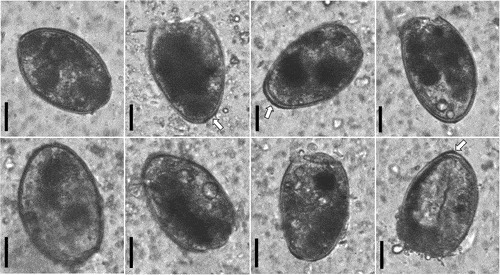17th Century Mummy Sheds Light On Parasites In Ancient Korea
Mummies dating back to the 17th century Joseon period in Korea are, by and large, excellently preserved thanks to a particular mummification process used during that time. One particular mummy, which was discovered in late 2014 in Cheongdo, is likewise expertly preserved and thanks in part to that, it has helped shed light on the nature of parasitic horrors that people had to deal with at that time.
The mummy was discovered located in a tomb alongside what researchers describe as well-preserved clothing. Per the study, this mummy had 'excellent' preservation status, and its history is known to the researchers. The mummy was once a man named Jing Lee who was born in 1580 and passed away at the age of 63 in November of 1642. Upon subjecting the mummy to a CT scan, researchers noted that there was a mass of some sort on the mummy's liver.

Unable to determine anything else about the mass from the CT scan, the researchers proceeded to perform an autopsy and remove the mass. It was cut up, put into a solution to rehydrate it, and then eventually examined using a microscope. That was when the researchers learned that the mass contained ancient eggs belonging to the parasite Paragonimus sp.
More than 293 million people are still vulnerable to this parasite today, and there was an unusually high instance of it back during the 16th to 18th centuries in Korea. The reason for the high prevalence is attributed to common consumption, during that time period, of raw freshwater crustaceans. The researchers explain that it was common to eat raw crabs with soy sauces, and to also use the juice from raw crayfish as a folk medicine.
The parasites that infected this man could have gravitated into the brains, lungs, and other bodily regions, and may have been the cause of his death. Fortunately, thanks to modern knowledge about parasite transmission and simple ways to mitigate it, instances of parasite infections like this are low. Raw fish and other sea critters can often be safely consumed raw without the risk of parasites if the meat is properly frozen before consumption.
SOURCE: BioOne
